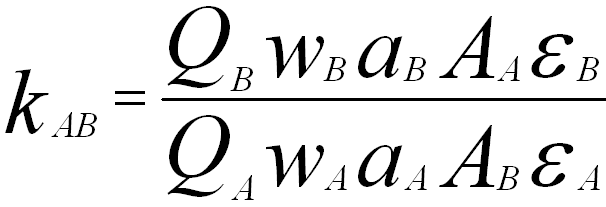|
This book (Practical Electron Microscopy and Database) is a reference for TEM and SEM students, operators, engineers, technicians, managers, and researchers.
|
=================================================================================
The L family of characteristic X-rays observed by EDS involves Lα(1), Lβ1(0.7), Lβ2(0.2), Lβ3(0.08), Lβ4(0.05), Lγ1(0.08), Lγ3(0.03), Lλ(0.04), and Lη(0.01). Different from the K-family, the numbers in the parentheses present approximate relative intensities, since these intensities vary with the over-voltage and with the element in question .
If neither a proper database nor standards are available, the kAB factors can be theoretically calculated,
 ----------------------------- [2519] ----------------------------- [2519]
where,
QA and QB -- The ionization cross-sections for the X-rays of elements A and B, respectively,
wA and wB -- The fluorescence yields for elements A and B, respectively,
aA and aB -- The
relative transition probabilities for elements A and B, respectively,
AA and AB -- The atomic weights for elements A and B, respectively,
εA and εB -- The detection efficiencies of the
EDS detector for the X-rays from elements A and B, respectively.
In Equation 2519, it is most difficult to accurately calculate Q and ε. The extraction of the kAB values for K lines above 1.5 eV in energy is in error of ~10 to 15% mainly due to the inaccurate estimation of Q. For the same reason, it is not recommended to calculate the kAB values for light elements Z < 11 or for L lines.
|
 ----------------------------- [2519]
----------------------------- [2519]